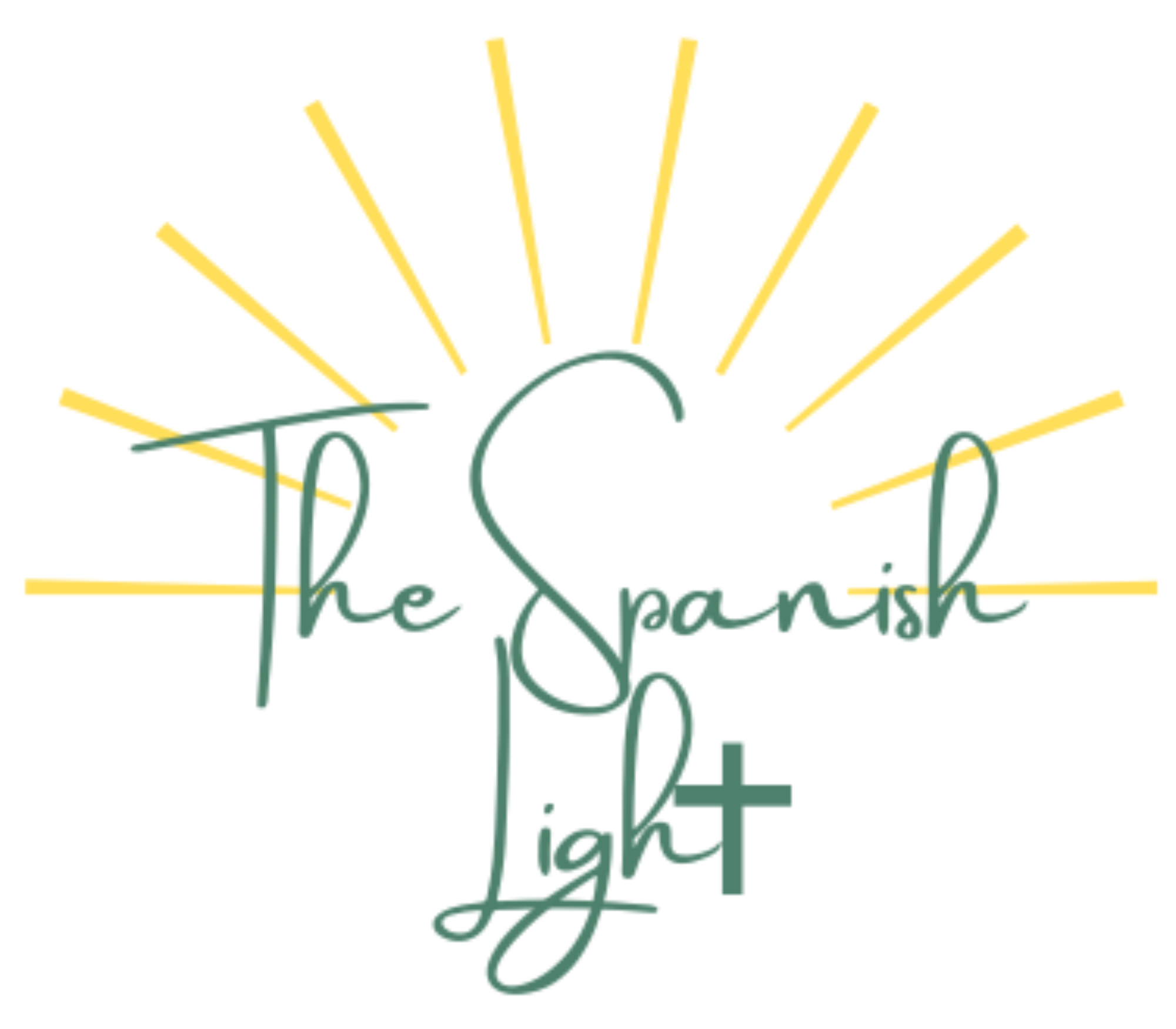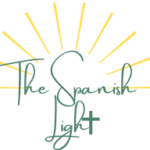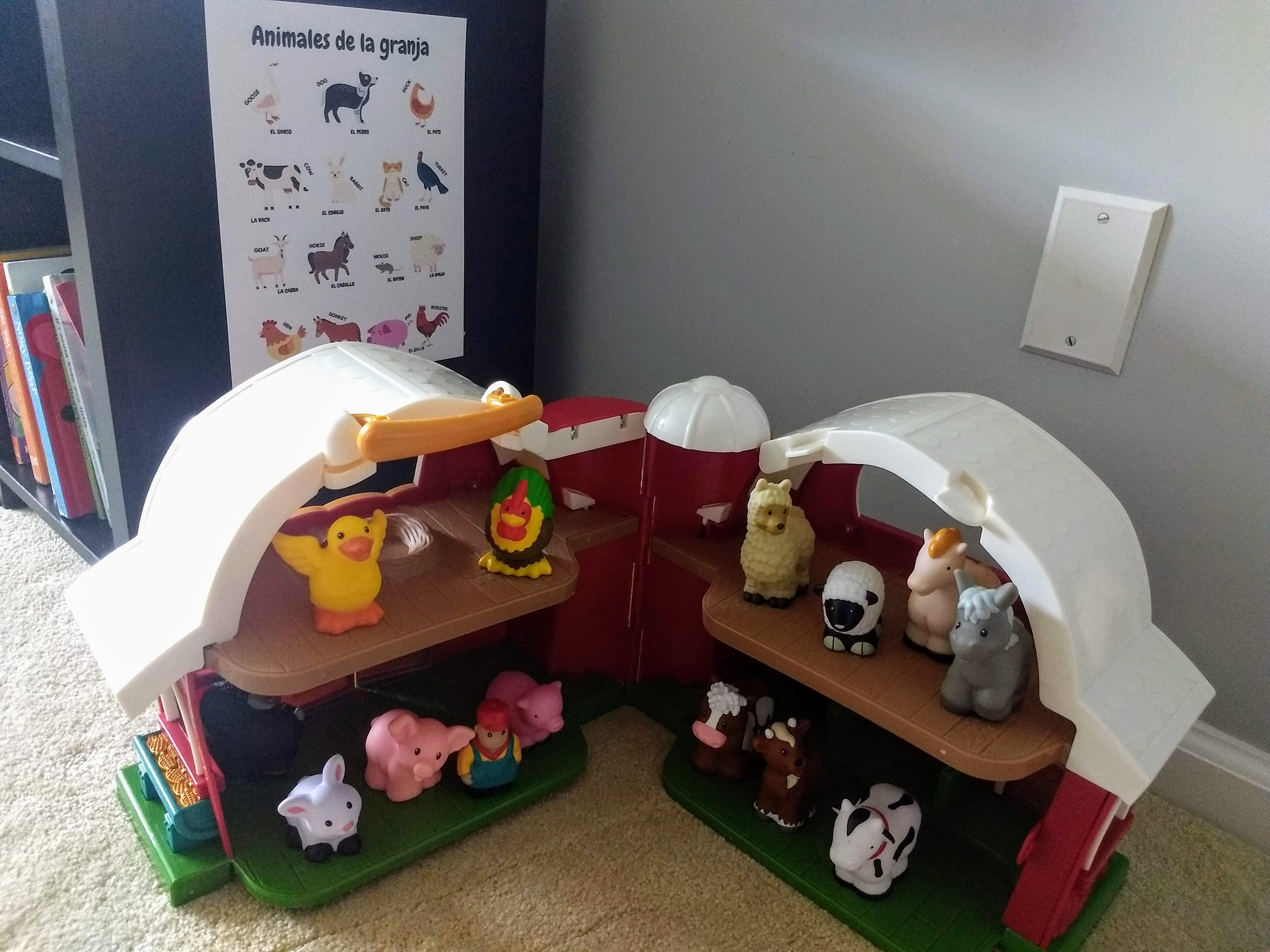
Have you ever wondered why we teach kids about animals so much when many of the animals they may only ever see in a zoo? It’s because learning about animals (like foods, colors, shapes, etc.) helps them practice the skills of identifying, differentiating, and categorizing. It’s really higher level thinking than we give it credit for. So since it’s an important topic for kids to learn about, I’m going to share with you how you can increase your use of Spanish vocabulary when playing with animal toys with your child.
So, confession, just because it’s good for the soul. With Spanish being my second language, there have been quite a few times where I’ve had to look up animal vocabulary when playing with my daughter. My family follows the language model of Minority Language at Home (MLAH) which means both my native Spanish speaking husband and myself -the non-native Spanish speaker- speak to my child in Spanish when at home. While I would say I’m fluent in Spanish as well, there are some words and topics that I just wasn’t taught in school. Can any of you relate?
Plus, while living in Honduras for a decade, I was more likely to learn the names of jungle and sea animals. So, yeah, I’ve had to learn alongside my daughter how to say “A duck quacks” along with a few others, but looking up one time how to say some of these words just wasn’t enough. It wasn’t sticking.
They say something needs to be READ 7 times to be remembered. So instead of interrupting our play session over and over to look up the same words, I’ve created multiple animal posters to help me and my family stay in our target language as much as possible, and I want you to have them too!
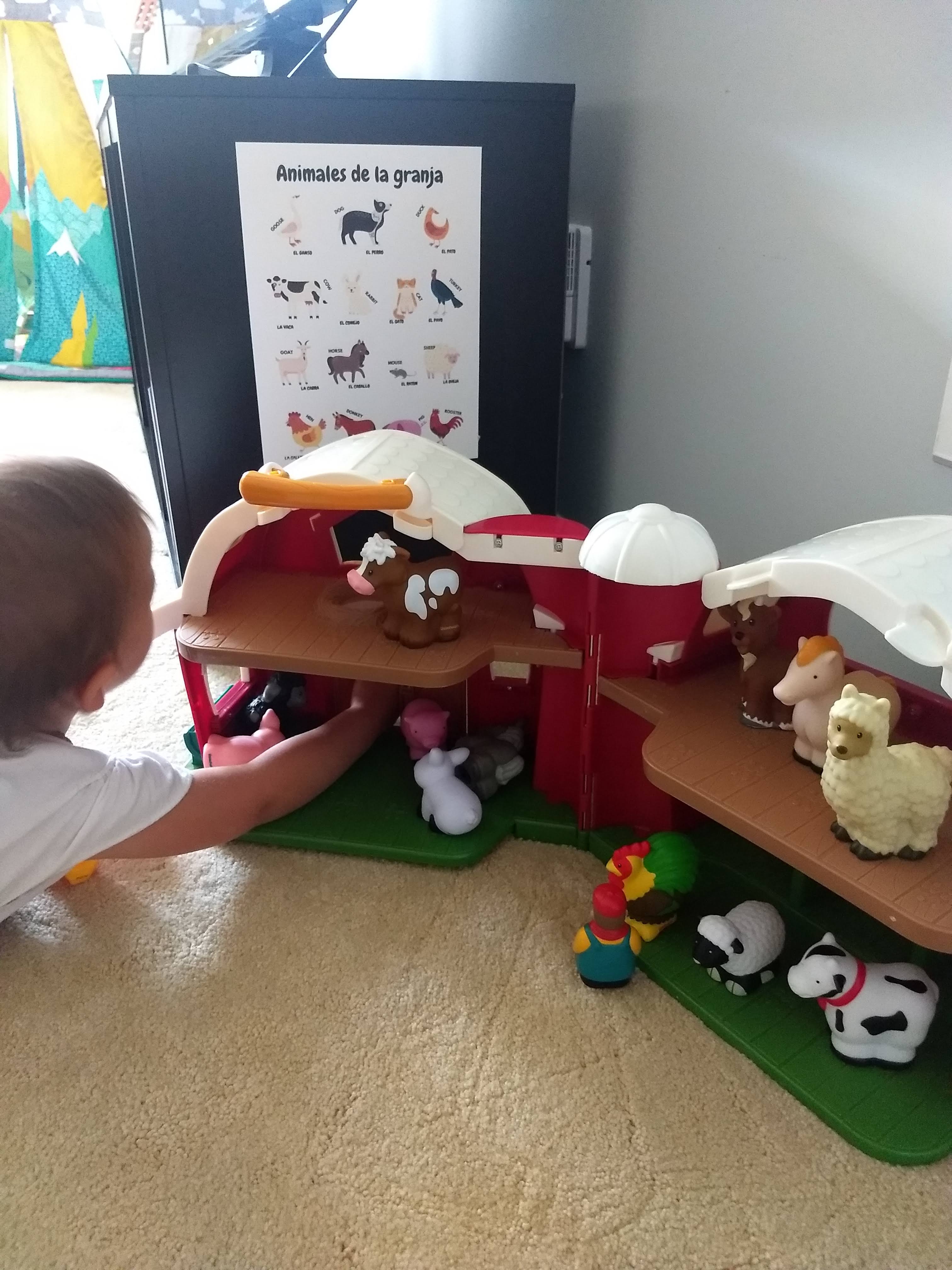
Language learners need a text rich environment. This isn’t the first nor will it be the last time I say this. It’s so important. So I’ll say it again. Language learners need a text rich environment. So why not add meaningful text to your walls as well? These posters I’m sharing with you add colorful content that will help your child learn how to read the words as well. Keep these hung in your play areas, and you’ll be practicing and playing more in Spanish.
Here are the resources that I’ve crafted for you and can all be found in my shop.
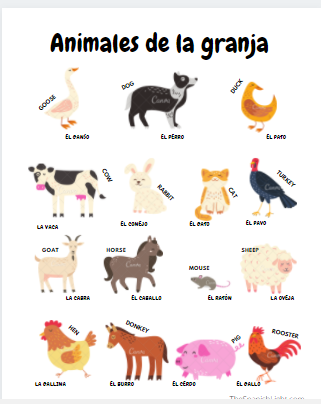
Farm Animals in Spanish and English poster
This instant download is for a poster to teach your child the most common farm animals and their names in Spanish and English. Your family will successfully be able to practice using this vocabulary while playing with a toy farm or stuffed animals.
Looking for some toy suggestions? We lean towards Montessori type toys in my home as they offer loads of open ended play and lots of language practice, but more on that in another post.
Here are two great toy options:
Disclaimer: As an Amazon Associate, I get commissions for purchases made through links in this post at no extra cost to you. However, it is a financial blessing to my family when you do purchase directly through the links clicked on here and helps me keep bringing to you other wonderful free resources. ¡Gracias!
Our barn and animals that’s shown in the pictures
Farm animal puppets – great for open ended imaginative play and language practice
Plus, although there are tons of bilingual books out there that teach about animal sounds, these two are our ABSOLUTE favorites and worth sharing with you.
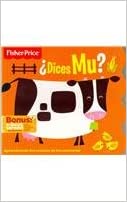
Dices Mu? – in Spanish only; a sweet boy goes through the farm asking each animal what it says as he’s looking for the animal that says “Mu”
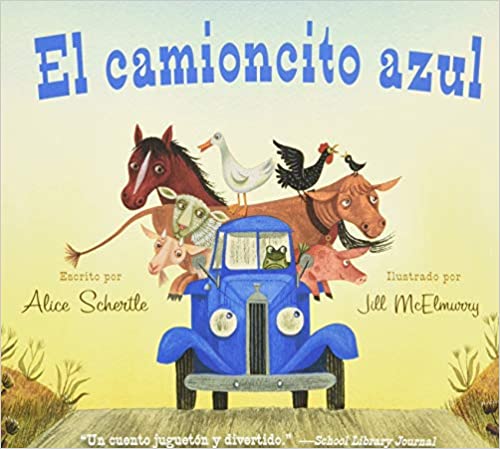
El Camioncito Azul- This version is only in Spanish; English versions also available. Azul shows how to be a good friend and greets each farm animal.
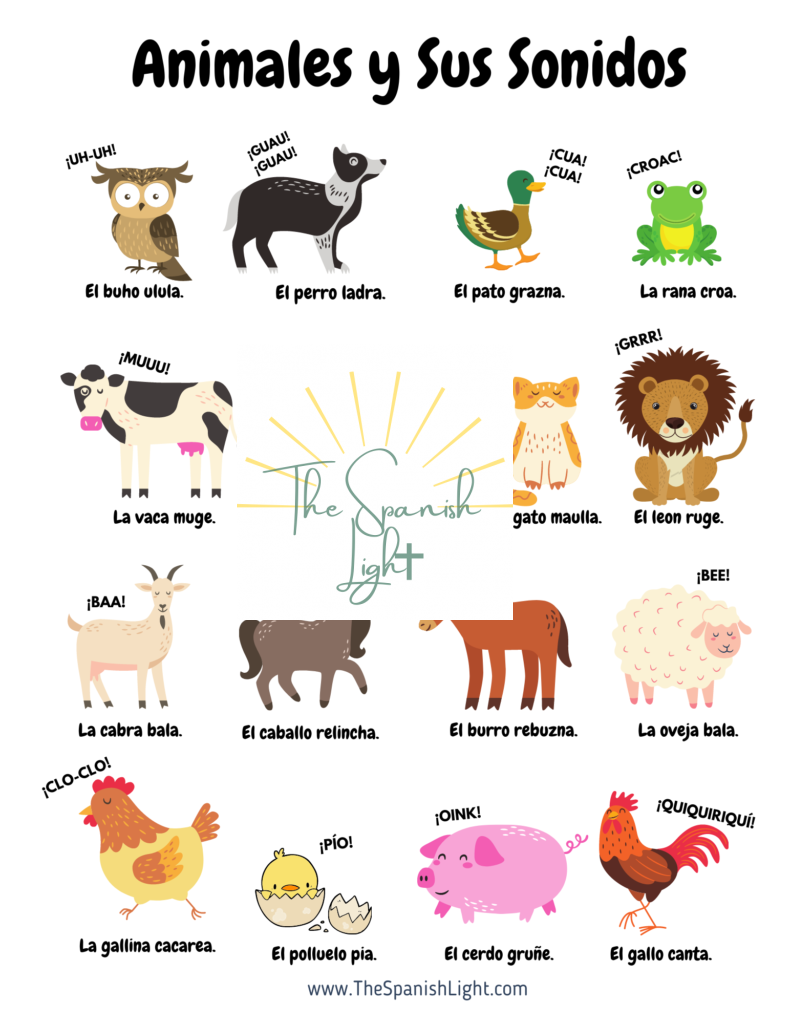
Animals and Their Sounds in Spanish poster
Looking for a resource to teach your child animals and their sounds in Spanish?
This instant download teaches your child in Spanish 16 of the most common animals. What makes this poster so unique is that it includes what sounds the animals make in the Spanish language and how they make their sounds.
Didn’t know that animals make unique sounds according to other languages? Yup! That’s why I’ve made this poster to help you teach your child.
Example in English: The dog barks. Ruff! Ruff!
Example in Spanish: El perro ladra. ¡Guau! ¡Guau!
Your family will successfully be able to practice using animal vocabulary and sentence structure while playing with any animal toys with this poster hanging close by.
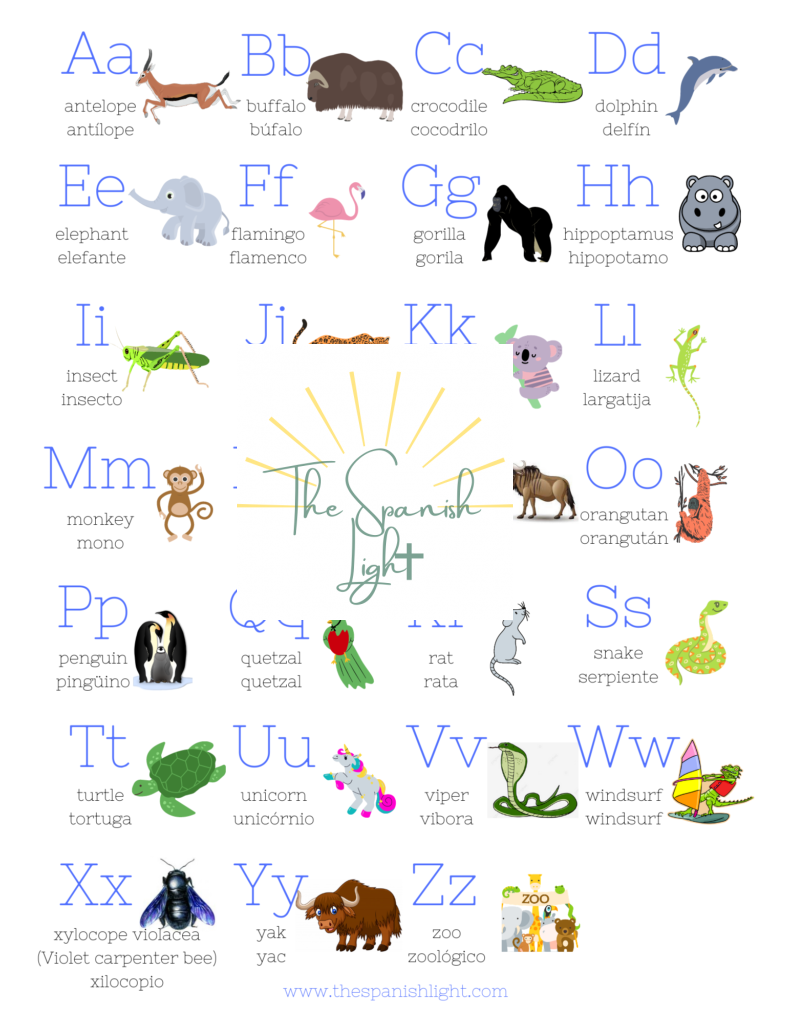
Animals A-Z in Spanish and English poster
This Animal Themed A-Z poster is perfect for every bilingual family with young ones. Teach the alphabet with animals or animal related things who have names that start with the same letter in Spanish and English.
This instant download teaches your child 27 letters and an animal that start with that same letter for both its Spanish and English translation. This took some true thinking to put together for you! This poster uniquely includes all 26 English alphabet letters as well as the ñ from Spanish. [In case you’re one of those that’s challenging me in your mind about where the ch and ll are, they were excluded from the official alphabet by the Royal Academia Española in 2014.]
You can finally practice the letters with your children in either language and say what animal stands for it without confusing them when you have to translate its name and it starts with a different letter.
When using this poster…
In English, say: The A is for antelope.
In Spanish, say: La A de antílope
Needing help knowing how to pronounce the letters in Spanish as well? Check out these Spanish Alphabet Pronunciation clips at SpanishDict.com. This chart below is also helpful and includes phonetic pronunciation of each letter below it.

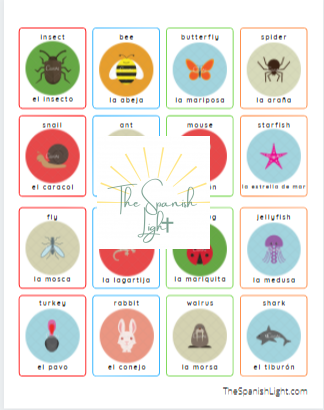
Wild and Domestic Animals in Spanish and English poster and flashcards bundle
This instant download teaches your child in Spanish 56 different animals. What makes this set of 4 posters so unique is that they include both wild and domestic animals with their names in Spanish and English.
This bundle includes posters and flashcards that aid your family to successfully use animal vocabulary while playing with any animal related toy, when outdoors and spotting them or reading books.
Ideas for how to use flashcards in a fun way:
- Games: Print the flashcard sets twice and use them to play games like Go Fish and Memory.
- Nature Hunt: Take a clipboard and the pages (do not cut the flashcards out for this one). Head to a garden, nature reserve, aquarium or zoo near you and have your kids cross off the ones they find.
- 𝗣𝘂𝘇𝘇𝗹𝗲𝘀: For toddlers: Cut up each flashcard into 2 pieces (half way through the graphic horizontally). Practice putting the puzzles together and practice each ones Spanish and English names.
- Guessing Game: Draw a flashcard from a pile without looking and hold it to your forehead. Ask yes or no questions to your child to guess what food it is.
Now head on over to my shop and buy one… or all! 🙂
